Isambard Wilkinson. Valladolid. 4-Dic-2020. THE TIMES
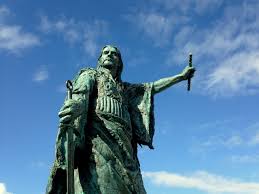
A statue of the chieftain Red Hugh O’Donnell stands in Donegal Town, in the Republic of Ireland
The hunt for the remains of the 16th-century Irish rebel chieftain Red Hugh O’Donnell has run into a thick stone wall: that of a branch of Santander Bank in the centre of Spain’s northern city of Valladolid.
Hopes that the search for the last resting place of O’Donnell may be successful were raised last May when archaeologists confirmed they had discovered traces of the chapel where he was buried in 1602.
O’Donnell, the ruler of a kingdom that is now Co Donegal and who was known as Red Hugh because of the colour of his hair, led a rebellion that nearly drove Elizabeth I’s troops from Ireland. He died near Valladolid on a mission to secure Spanish help against the English.
For centuries, the exact location of the Chapel of Marvels — where Christopher Columbus was first buried — had remained a mystery. Local interest in finding it was revived by a visit by Brendan Rohan, a retired Irish soldier, who was trying to find the grave of his national hero. The city hall took advantage of planned roadworks in an area where researchers thought the chapel once stood to start the excavation.
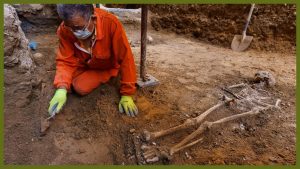
Cesar Manso/AFP/Getty ImagesThe Hispano-Irish Association has unearthed 20 skeletons in a ruined chapel in Valladolid, but they all pre-date Red Hugh O’Donnell
Archaeologists have unearthed 20 skeletons but all of them pre-date O’Donnell, Juan Manuel Guimeráns, the city hall culture director, told The Times. To explore further would require extending the excavation beyond a pavement to inside the walls of the bank.
“We believe that the main part of the chapel, and hence the part where Red Hugh would most likely have been buried, lies under the bank,” he said. “We are in talks with representatives of Santander Bank to see if we can reach an agreement to continue the excavation.”
Researchers know that O’Donnell was buried in the chapel of the once vast and now entirely disappeared St Francis monastery from accounts handed down by two Irish Franciscan monks who accompanied him to Spain. His ill-fated journey took place when England had deployed about 19,000 troops in Ireland. His and the O’Neill clan had inflicted several heavy defeats on them, but in 1602 the English prevailed over Irish and Spanish forces that had landed at Kinsale.
Not all the Spanish were able to disembark as a storm forced them away from the coast and they had to return to Galicia, in northwest Spain, where O’Donnell followed after the defeat to petition King Philip III to send more troops and weapons.
After waiting for a few months at La Coruña for a reply the chieftain decided to set o for Valladolid, then the seat of the court, to try to obtain a royal audience.
O’Donnell fell ill in Simancas, a few miles from the city, where he died aged 29.
“Legend has it that he was poisoned by a traitor or spy, but it seems more likely he died of something like a tapeworm or some other infection,” Carlos Burgos, head of the Hispano-Irish association and spokesman for the dig, said.
Mr Burgos said the king honoured the Irish leader with a royal funeral, a description of which, based on the accounts of his accompanying monks, entered Irish chronicles. “His body was conveyed to the king’s palace at Valladolid in a four-wheeled hearse, surrounded by countless numbers of the king’s state ocers, council, and guards, with luminous torches and bright flambeaux of beautiful wax-light burning on each side of him,” the chronicle says.
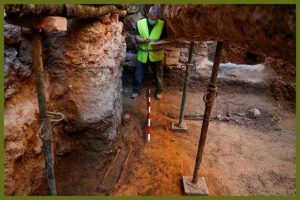
Juan Medina/Reuters It is believed that Red Hugh O’Donnell’s grave in Valladolid, Spain, lies behind the wall of a bank
“He was afterwards interred in the monastery of St Francis, in the chapter precisely, with veneration and honour, and in the most solemn manner that any of the Gaels had been ever interred in before.”
Columbus was buried 100 years earlier in the chapel before his remains were moved to Seville and later sent to the Caribbean island of Hispaniola — present-day Haiti and the Dominican Republic — and Cuba before returning to Seville in 1898.
After confirming the chapel’s location in Valladolid archaeologists began looking for a skeleton missing its big toes: in 1592 O’Donnell lost both of his to frostbite while making his way over the Wicklow Mountains after his escape from imprisonment in Dublin Castle.
Olatz Villanueva, an archaeologist from the Simancas Historical Institute who is in charge of the excavation, said that no such skeleton was found and that all remains uncovered so far date from the medieval period. “The dig is complicated because there have been 400 years of disturbances,” she added.

Red Hugh O’Donnell lost his big toes to frostbite crossing the Wicklow Mountains after he escaped from Dublin Castle
The monastery of St Francis was destroyed during the Mendizabal Confiscation of church property in 1836 and not a stone was left standing. “To excavate under the bank would be technically more complex as it would require working within an existing structure,” Ms Villanueva said.
But Mr Guimeráns wants to continue the hunt for O’Donnell. “At the most we hope the bank will allow us to proceed and perhaps to allow for the installation of an information centre to pay homage to such a historic site and to two illustrious figures such as Red Hugh and Columbus,” he said.
“At the least we hope they’ll permit us to erect a plaque to them on the bank’s wall.”
Bard Wilkinson

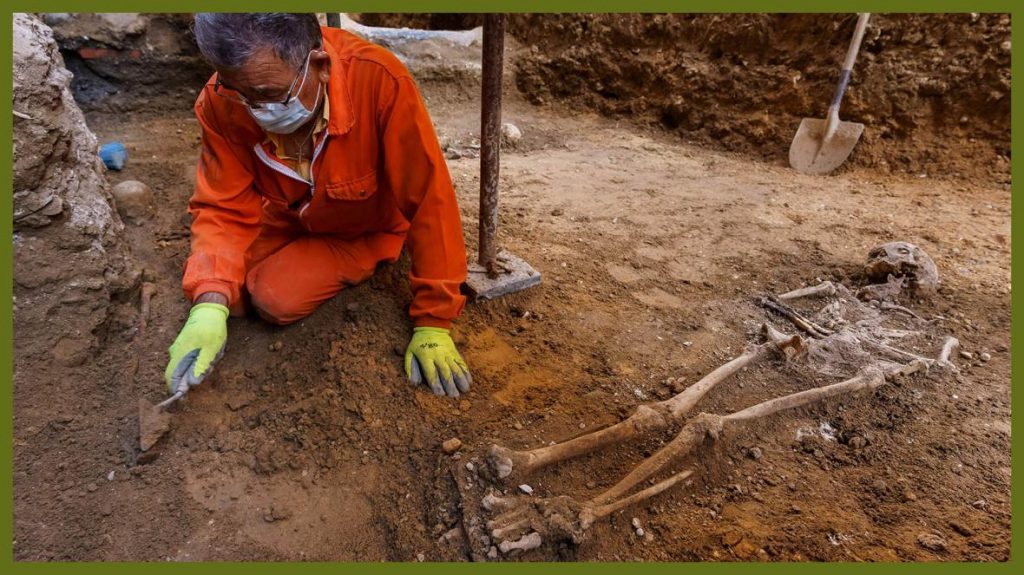



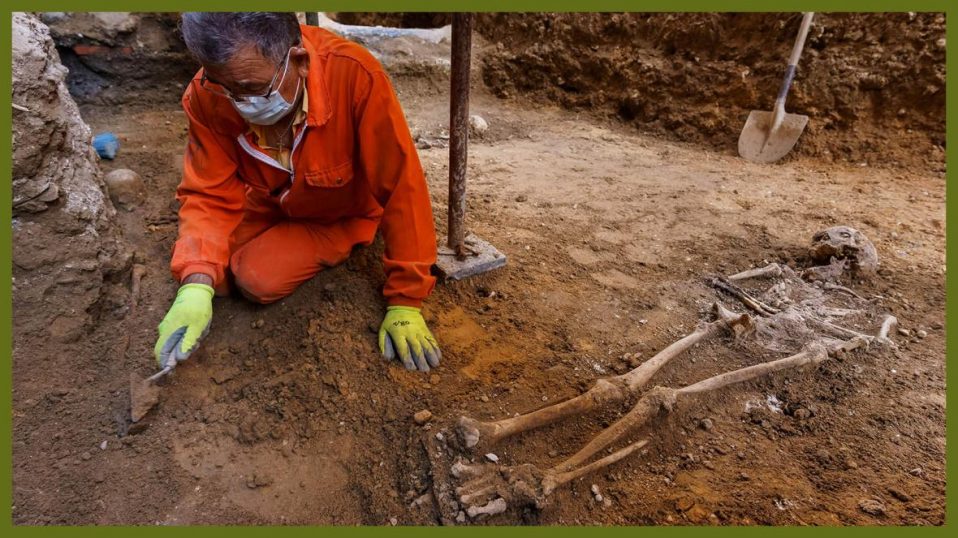

Post a comment